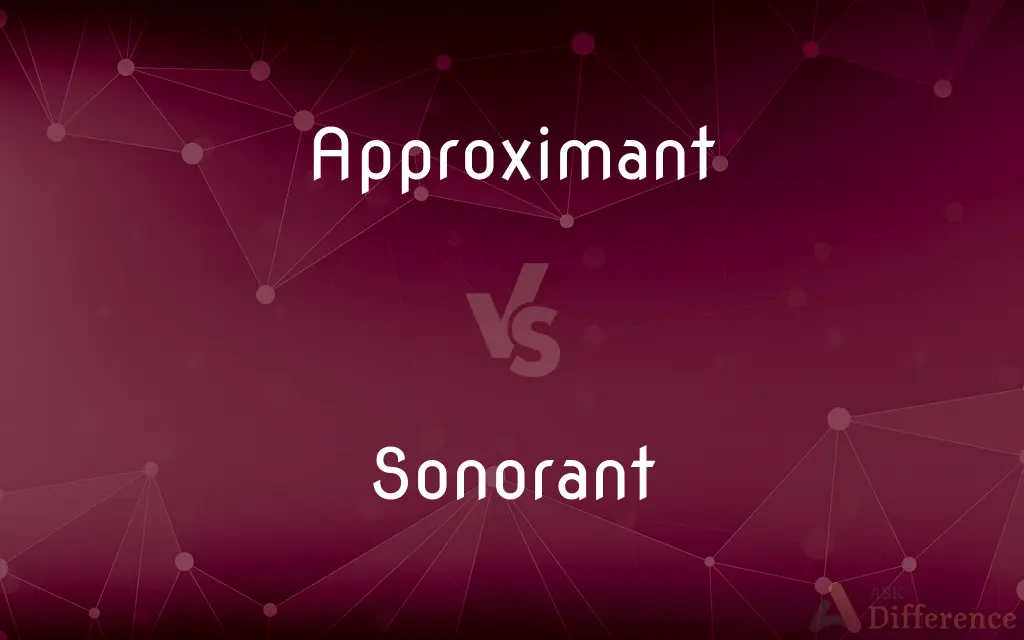Approximant vs. Sonorant — What's the Difference?

Difference Between Approximant and Sonorant
ADVERTISEMENT
Compare with Definitions
Approximant
Approximants are speech sounds that involve the articulators approaching each other but not narrowly enough nor with enough articulatory precision to create turbulent airflow. Therefore, approximants fall between fricatives, which do produce a turbulent airstream, and vowels, which produce no turbulence.
Sonorant
In phonetics and phonology, a sonorant or resonant is a speech sound that is produced with continuous, non-turbulent airflow in the vocal tract; these are the manners of articulation that are most often voiced in the world's languages. Vowels are sonorants, as are nasals like [m] and [n], liquids like [l] and [r], and semivowels like [j] and [w].
Approximant
A speech sound, such as a glide or liquid, produced by narrowing but not blocking the vocal tract, as by placing an articulator, such as the tongue, near another part of the vocal tract.
Sonorant
A usually voiced speech sound characterized by relatively free air flow through the vocal tract and capable of being syllabic, as a vowel, liquid, or nasal.
Approximant
(phonetics) A consonant sound made by slightly narrowing the vocal tract, while still allowing a smooth flow of air. Liquids and glides are approximants.
ADVERTISEMENT
Sonorant
(phonetics) A speech sound that is produced without turbulent airflow in the vocal tract; the generic term of vowel, approximant, nasal consonant, etc.
Approximant
(mathematics) An approximation to the solution of a function, series, etc.
Share Your Discovery

Previous Comparison
Didactic vs. Heuristic
Next Comparison
Hooligan vs. Thug













































